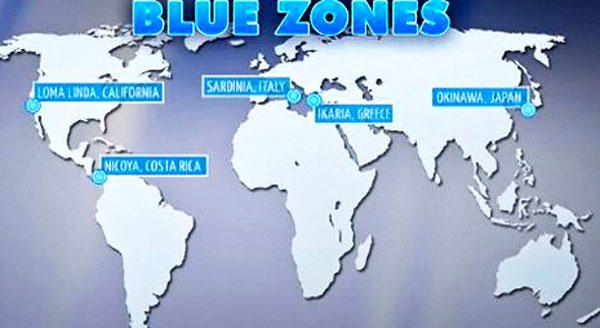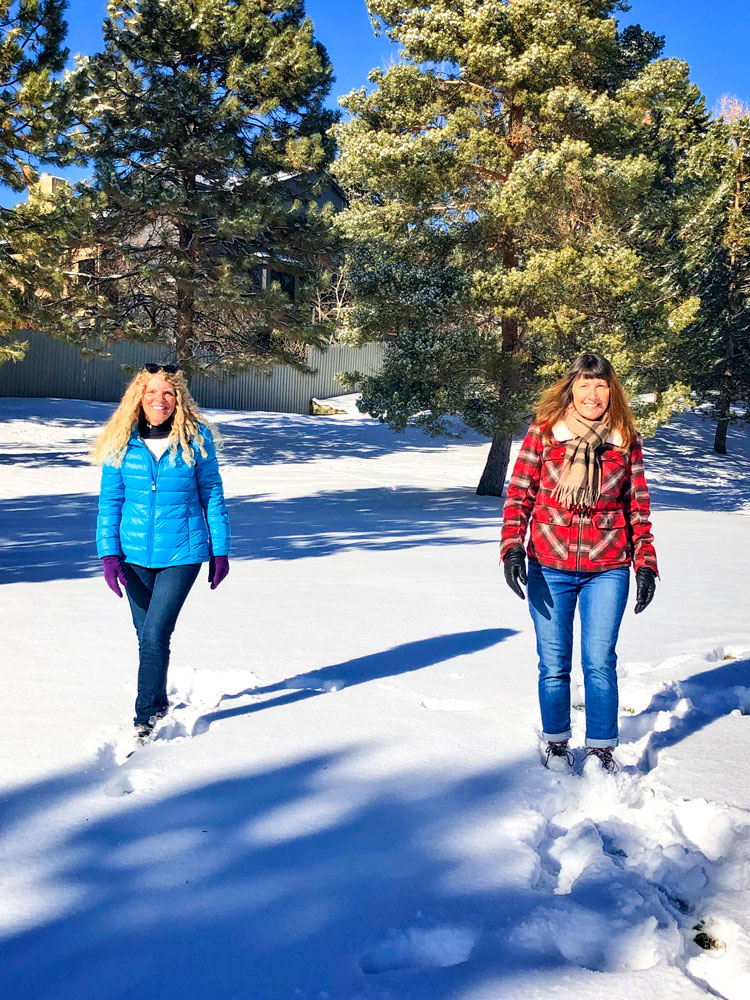The Blue Zones
Article and photo by Lisa Nicklanovich

The Blue Zones are areas of the world that boast the most people who live to be 100 or more. These people in the Blue Zones are living long, healthy and meaningful lives. While we all can’t move to Japan or Italy and live by the sea, there are lessons we can learn from the people of these areas.
Who doesn’t want to know the secrets to living a long, healthy life? The Blue Zones, areas of the world that boast the most people who live to be 100 or more, provide some insight into some of those secrets.
Author Dan Buettner wrote an article for National Geographic in 2005, and subsequent books about these areas – where people not only live longer, but they live with a better quality of life with minimal disease or stress. The areas include Sardinia, Italy; Okinawa, Japan; Nicoya Peninsula, Costa Rica; Loma Linda, California; and the Greek island of Ikaria. While where and how these centenarians live cannot be completely replicated, there are lessons to learn about how these people live that could help everyone live longer, healthier lives.

Colette Celecki (left) and Dena Larsson (right) have been walking around Castle Pines neighborhoods together every weekday since 2004. Like the healthy people living in the Blue Zones, Colette and Dena make it a priority to walk each day, whether it is early in the morning or late at night. Their friendship is also important to their health and well-being; their strong connection has helped them through hard times. “You always feel better after walking with a friend! The walks bring joy. They are saving us during this pandemic,” Colette said.
When studied as a group by a team of medical researchers, anthropologists, demographers and epidemiologists, the Blue Zones yielded nine powerful lessons:
Move naturally. As you go about your day, try to keep moving. Garden, cycle, walk when talking on the phone. In Okinawa, people traditionally sit on the floor to read, eat, talk and relax instead of sitting in chairs which means they are getting up from the floor many times per day.
Purpose. The Okinawans call it “Ikigai” and the Nicoyans call it “plan de vida”; both translate to having a reason to wake up each day, whether it is caring for others or running a business.
Downshift. Stress is going to do damage if it is not dealt with. Okinawans take a few moments each day to remember their ancestors, Adventists pray, Ikarians take a nap and Sardinians do happy hour.
Eighty percent rule. “Hara hachi bu – the Okinawan, 2,500-year-old Confucian mantra said before meals reminds them to stop eating when their stomachs are 80% full. The 20% gap between not being hungry and feeling full could be the difference between losing weight or gaining it. People in the Blue Zones eat their smallest meal in the late afternoon or early evening and then they don’t eat any more the rest of the day.
Plant slant. Beans, including fava, black, soy and lentils, are the cornerstone of most centenarian diets. Big batches cooked once provide meals throughout the week. Meat – mostly pork – is eaten on average only five times per month and serving sizes are 3 to 4 ounces, about the size of a deck of cards.
Wine at 5. Only the Seventh-day Adventists in California didn’t have one or two glasses a day with friends and/or with food.
Belong. Denomination doesn’t seem to matter, but connecting with others in faith does.
Loved ones first. Keeping aging parents and grandparents nearby or in the home, committing to a life partner and investing in children with time and love are how centenarians put families first.
Right tribe. Build a social network that supports healthy behaviors. Okinawans created “moais” groups of five friends that commit to each other for life.
For more information, visit www.bluezones.com or check out Dan Buettner’s books on the Blue Zones.